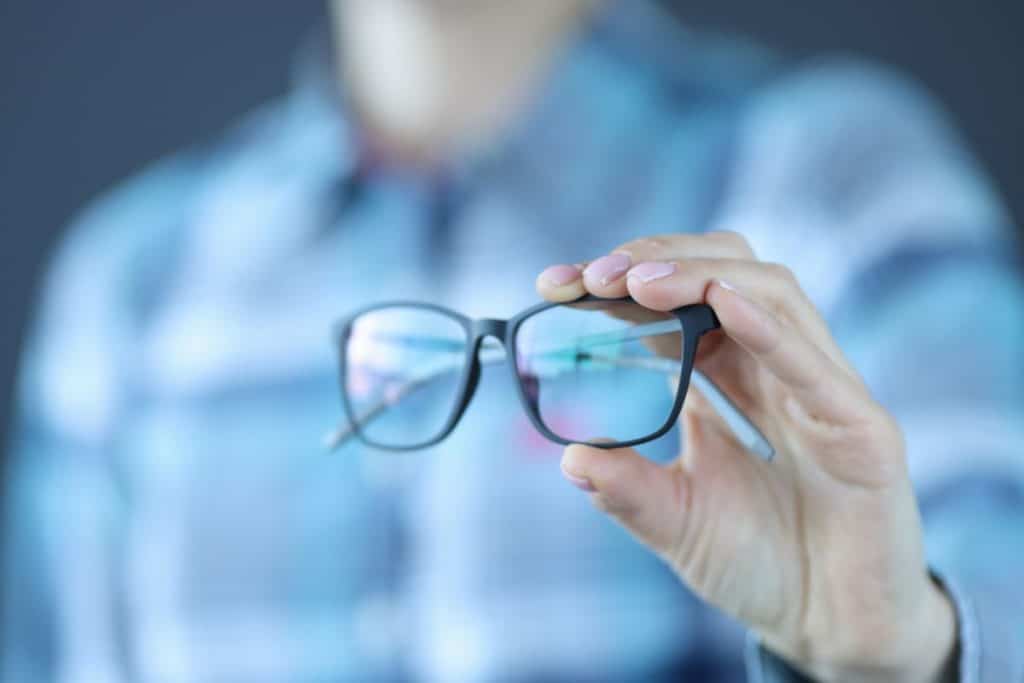Research has proven the damaging effects of continuous blue light exposure on our vision. Fortunately, there are anti-radiation glasses. These glasses have lenses specially made to filter out blue light and excessive radiation from artificial light sources. Now, how do you test anti-radiation glasses without blue light?
Apart from asking for a manufacturer’s Spectrum Report, the alternative ways to test your anti-radiation glasses without the blue light is by performing the reflection test, blue sky filter test, pigments test, black and blue square test, and RGB color wheel test.
It is vital to test a set of anti-radiation glasses you just bought to make sure they genuinely function. Read on to know more.
Quick Navigation
- How to Test Anti-Radiation Glasses Without Blue Light
- How To Spot Fake Anti-radiation Glasses
- How Are Anti-Radiation Glasses Tested Professionally?
- Conclusion
How to Test Anti-Radiation Glasses Without Blue Light
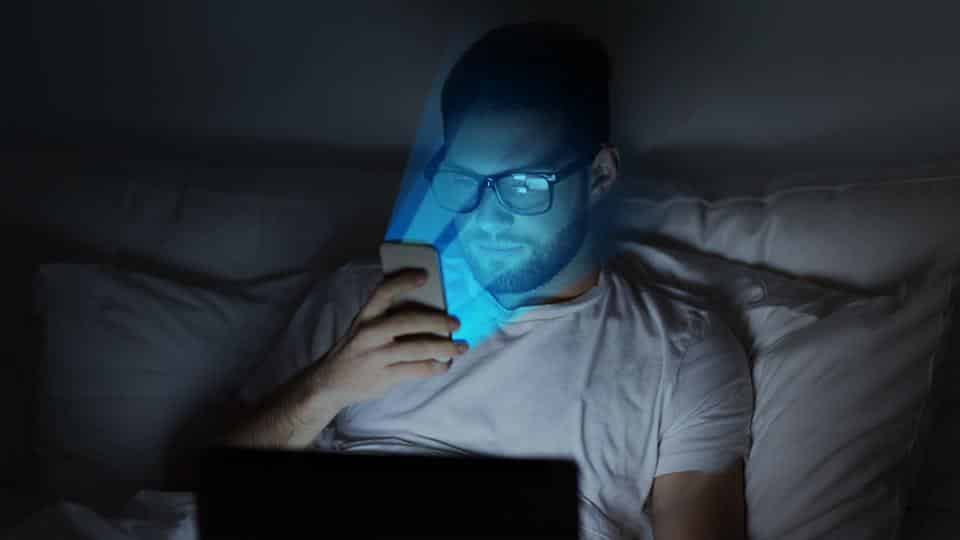
You may test your anti-radiation glasses at home to see whether they completely block out blue light. Below are several methods that we recommend.
Do the Reflection Test
Perform the reflection test at home to see if your anti-radiation glasses genuinely filter blue light (and not green and violet light). Though you cannot test blue light glasses in the most precise manner in this test, it will show you whether or not it entirely or partially filters blue light.
Once you put on your glasses, you may start by observing the reflection of the lens. If the reflection color is blue, then your glasses are reflecting some blue light. If not, they are most likely of no utility.
Numerous blue light blocking glasses from the well-known brand reflect violet or green light, which are considered invaluable. Although they often have basic anti-reflective coating, green coatings do not intend to block the blue light.
Avoid falling for the marketing gimmicks of businesses whose glasses reflect violet light and tout protection against UV light. It is a marketing ploy since violet light is not in your LED screens or lights.
Perform The Blue Sky Filter Test
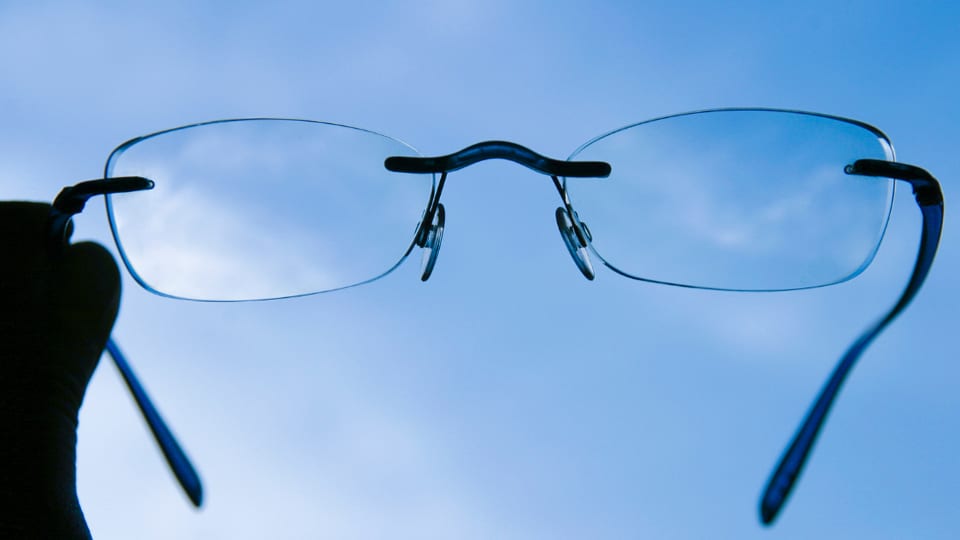
This test is as simple as it seems. Wait for a clear day, then point your glasses toward the blue sky.
The lenses will seem clear when worn typically. However, when they filter the prescribed 30% blue light, they will have a little yellow tint. Most filtering occurs near the beginning of the blue light spectrum, often known as blue-violet light.
You may more clearly observe this light being filtered away by the lenses while gazing through the lenses into a bright blue sky.
The ideal anti-blue light glasses should have a slight yellow tint.
Stare At A White Background For A Pigments Test
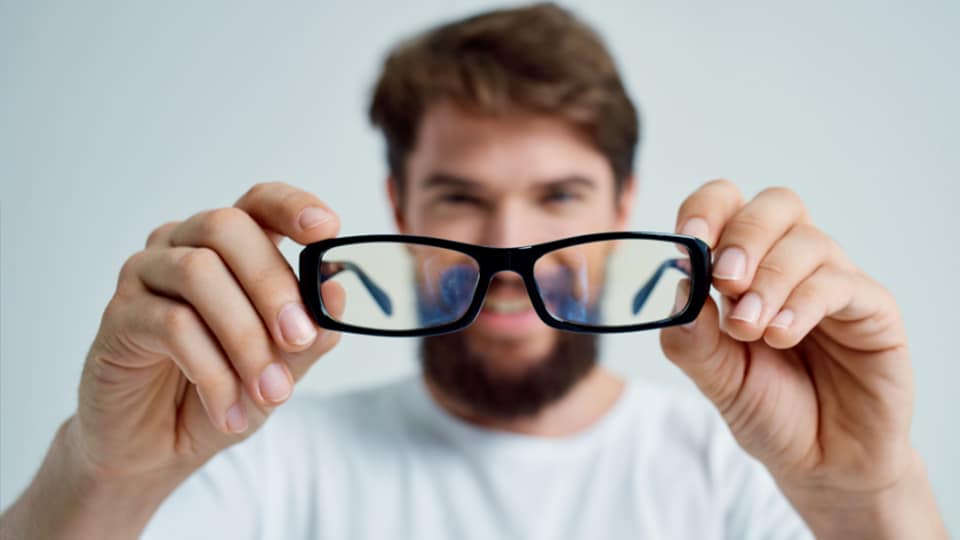
The lens pigment test is the next anti-radiation eyeglasses test you may do, especially for clear-lens daylight glasses. You may do this test by bringing your glasses up and staring at anything brilliant white, such as a white backdrop on digital screens or a piece of paper.
If white colors warm up just a little bit, the clear lens has specific pigments that absorb blue light as it travels through the lens.
If the white colors do not warm up and the lens is apparent, the glasses likely contain primary anti-reflective coatings that can block a maximum of 5 to 20% of blue light.
If done correctly, the lens may filter 50% of blue light using specific blue light-absorbing pigments within the lens together with the reflective coating in a blue light test.
Do The Black and Blue Square Test
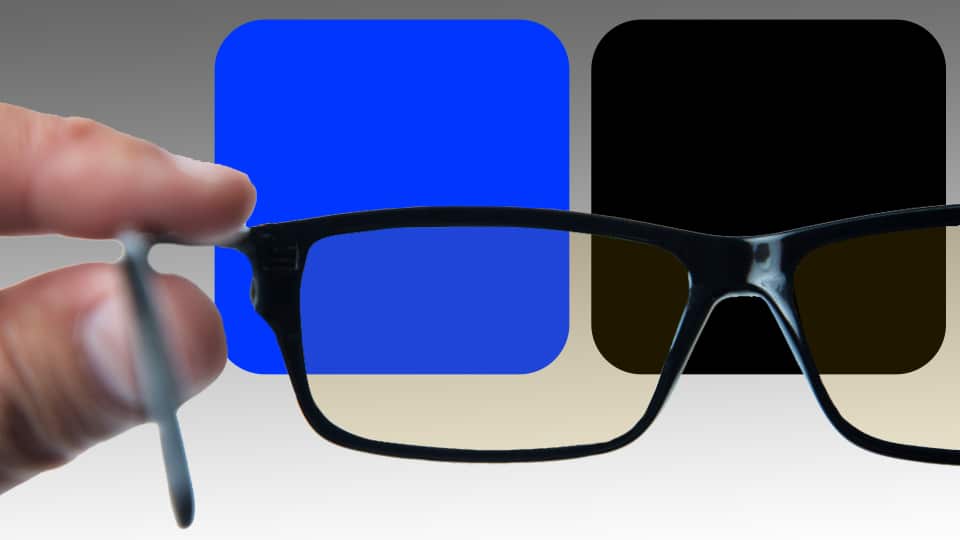
In this test, you stare at blue and black squares while wearing your anti-radiation glasses.
Your anti-radiation glasses blocked the blue light if black and blue both look dark. If not, it is generally best to throw them away and hunt for a pair that does.
Both colors should resemble one another if you use high-quality, effective blue light blocking glasses.
You may perform the same test on any blue-colored image on your laptop screen. See whether there is a change when you look at it with and without your glasses. If you fail to detect the difference, something is wrong.
Use The RGB Color Chart Test
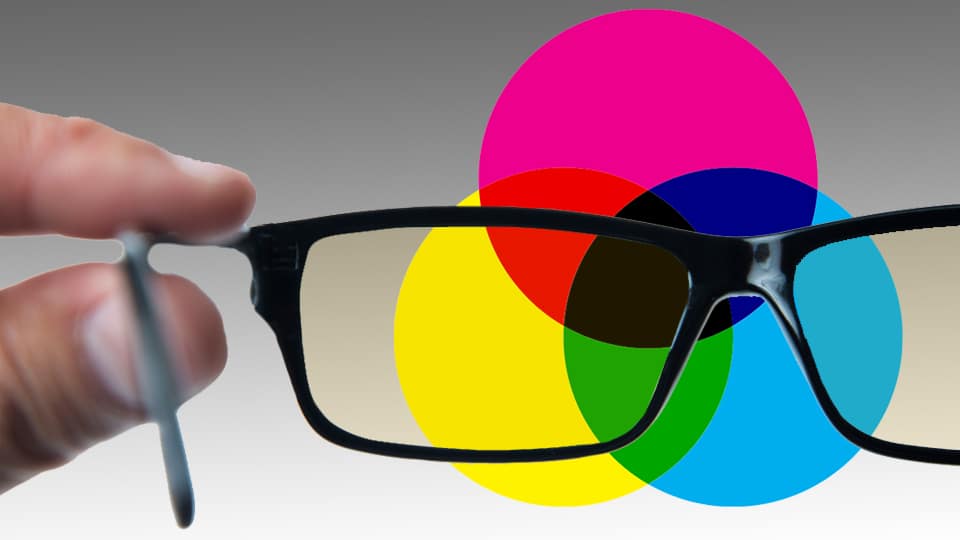
Another thing you may do to test your blue light filter in anti-radiation glasses is to see an RGB circle test chart. This test indicates how well your glasses filter blue and green light.
Put on your anti-radiation glasses to try this test and examine the RGB circle chart. The green part G should become much darker, and the blue circle B will seem completely dark gray.
Note that the lighter amber blue light blocking lenses won’t change the color of the green circle as they only have a blue light blocking function, not a green one.
Compare Lenses To A Screen’s “Night Mode” Setting

Your vision via anti-radiation glasses should be what “night mode” seems to be. Not all devices have this but most cell phones offer a “night mode” that dims the display’s blue light.
First, gaze at a phone or computer in night mode without your glasses. After that, exit night mode and put on your glasses to see the screen. The photographs should seem warm or yellow-orange in hue, depending on how powerful the night mode setting is.
Anti-radiation or blue-light-blocking glasses and night mode settings are practically equivalent.
Request For A Spectrum Report

Before deciding whether or not to buy a particular pair of blue light filtering glasses, requesting a Transmittance Spectrum Report from the manufacturer is the first and most crucial step. This comprehensive report will show how much the glasses block blue light.
Checking the facts is essential rather than relying solely on word of mouth. Refrain from trusting any business that refuses to provide you with this information.
Pay close attention to the amount of blue light mentioned in the transmittance spectrum report. Your glasses must filter out the damaging rays without completely blocking them out since doing so would make it difficult to see the displays and harm your energy levels.
The precise wavelengths of the filtered blue light are essential as well. The region of the entire blue light spectrum is where blue light from the electronics is most hazardous; therefore, it is crucial to ensure the glasses genuinely filter out a significant portion of this wavelength.
The various wavelengths in the blue light spectrum will be in a thorough lens testing report, along with the percentage of light blocked at each range.
Try Them Out For A Few Days
After many days of using your anti-radiation glasses, assess if your vision and sleep have improved. You will find that your sleep quantity and quality improve if your glasses block enough blue light, giving you more energy throughout the day and boosting your productivity.
Many manufacturers give you time to try the glasses out and determine whether they suit you during a trial period. Any lens color will function in trials, but orange lenses affect sleep more than clear ones. These glasses are helpful for people working the night shift.
How To Spot Fake Anti-radiation Glasses
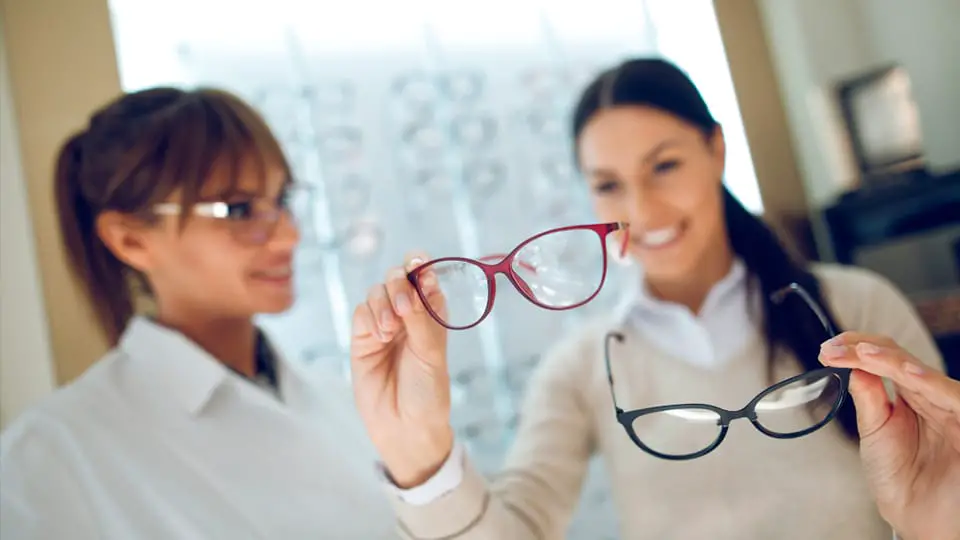
Prescription glasses with anti-radiation lenses have passed testing to verify that they satisfy industry requirements and are also five times more expensive.
Authentic anti-radiation eyewear passes the evaluation for scratch resistance, the caliber of the optics, the blue coating, and its efficacy in blocking the harmful blue light emanating from electronic devices.
Ensure your anti-radiation glasses filter at least 30% of blue light throughout the whole blue spectrum when the manufacturer delivers you their spectrum report. Since the amount of blue light emitted by various types of LED lights varies, it is best to concentrate on a set of anti-radiation glasses that at least 30% of the whole spectrum filters out.
Also, please stay away from companies who concentrate their anti-radiation glasses filtering on violet light; LEDs don’t have much of this, so save your money.
How about the blue pen test?
One test that will not correctly and accurately evaluate your anti-radiation glasses is the blue light pen test. If a firm selling anti-radiation glasses attempts to wow you with a violet light-generating pen on their computer glasses, disregard this marketing ploy and flee for the hills. This test is unmistakably producing purple rather than blue light and is, therefore, useless.
How Are Anti-Radiation Glasses Tested Professionally?

The test listed above is a good initial test to determine if your blue light glasses work as they should.
But only lab-grade spectrometers may be used to precisely determine how much blue light an anti-radiation lens excludes. This device has a high degree of accuracy when measuring the ability to filter out blue light.
A spectrometer separates visible light into its many colored wavelengths. After inserting the glasses’ lens into the apparatus, a detector ascertains which portion of a specific wavelength is blocked or passed by it. This method is the industry standard for evaluating blue light-blocking eyewear.
But there’s a catch: It is a very pricey instrument that will not be accessible to the general population. Only very specialist optics labs can access this piece of equipment.
Conclusion
You may take further measures to help safeguard your eyes in addition to purchasing a pair of anti-radiation glasses. Be sure to test any anti-radiation glasses you buy using one of the above-mentioned techniques. Ensure they are in good functioning order before using them for a lengthy period and avoid eye strain.

